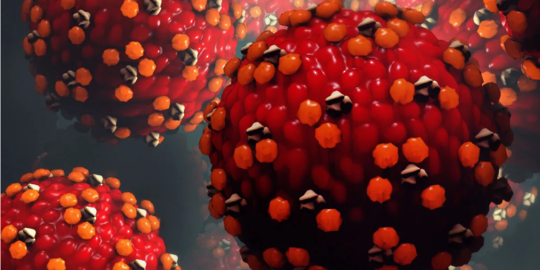Food Services Inspection
NOTE: To file a complaint about a food business please click here.
To search for the inspection report for a specific restaurant please click here.
The Food Safety Program and its associated regulations, is designed to safeguard public health and to provide consumers with safe, unadulterated food that is honestly presented via restaurants, retail food establishments, mobile food operations, temporary food events and vending machine locations. This is accomplished through numerous regulations.
A person who wishes to prepare, serve or sell food to the public for a charge is required by law to first obtain a license from Greene County Public Health (GCPH). These licenses are issued following a review and approval of facility plans/menu to assure compliance with Ohio’s Uniform Food Safety Code. Changes to the layout of the food business, new equipment, remodeling, etc. must be completed in concert with GCPH to reduce/eliminate delays in the project and to assure compliance with the Ohio Uniform Food Safety Code. Inspections during the operation of the food business assess the operator's success in assuring that every day practices are conducted in a safe and sanitary manner.
Inspection Process
Improper food handling practices can cause foodborne illness. Food premises inspections and risk class assessments focus on food preparation practices of food handlers and the identification of critical violations or critical control points. The facility’s sanitation, overall maintenance and food equipment are also assessed during the inspection process.
Types of Inspections
Standard Inspection
This is an unannounced, scheduled inspection of the food business. A Sanitarian will perform a complete inspection of the facility to determine compliance with all pertinent regulations.
Follow-Up Inspection
This is a scheduled inspection for the specific purpose of re-inspecting critical and/or non-critical violations that were found not to be in compliance at the time of the standard inspection. This inspection date is established during the standard inspection.
Critical Control Point (CCP) Inspection
This is an inspection conducted in a food service operation that may be announced or unannounced. This inspection focuses on the facility’s food processes and analyzes those critical points along each step and the controls in place to ensure all food is safe and wholesome. The Sanitarian also consults with operators to provide education to the restaurant’s staff to increase food handling and sanitation knowledge to prevent food cross-contamination issues and potential foodborne illnesses.
Process Review Inspection
This is an inspection conducted in a retail food establishment that may be announced or unannounced. This inspection focuses on the facility’s food processes and analyzes those critical points along each step and the controls in place to ensure all food is safe and wholesome. The Sanitarian also consults with operators to provide education to the restaurant’s staff to increase food handling and sanitation knowledge to prevent food cross-contamination issues and potential foodborne illnesses.
Complaint Inspection
This is an unannounced inspection conducted as a result of a complaint received by the Health Department. The specifics of the complaint will be evaluated / discussed with the person in charge.
Foodborne Illness Investigation
Foodborne illness complaints are received and a Sanitarian conducts an inspection at the facility reported to be involved in the foodborne illness. The inspection focuses on food source, storage practices, food processing techniques, food handling, sanitation and employee practices.
Training
The Sanitarian visits the food business to present a formalized training event for the facility’s staff.
Risk Levels
License fees are determined by the food business’ risk level. The higher the risk, the higher the license fee. The number of inspections per year is determined by the risk level assigned to the food business. Risk levels are assigned according to the potential hazard of a foodborne illness.
Number of Inspections
Risk Level I: Two (2) standard inspections per year
Risk Level II: Two (2) standard inspections per year
Risk Level III: Two (2) standard inspections per year
Risk Level IV: Two (2) simultaneous inspections per year:
Two (2) standard inspections which includes either:
A CCP inspection for food service operations, or
A Process Review inspection for retail food establishments
Risk level I: poses a small health risk to the public. Examples includes a business that offers for sale or sells: Coffee, self-service fountain drinks, prepackaged beverages, prepackaged refrigerated or frozen perishable foods, baby food or formula.
Risk level II: poses a higher potential risk to the public than risk level I because of hand contact or employee health concerns but minimal possibility of foodborne illness exists. Examples include, but are not limited to: Handling or preparing non-perishable food, holding for sale or serving perishable food at the same proper holding temperature at which it was received, or heating individually packaged and processed perishable food for immediate service.
Risk level III: poses a higher potential risk to the public than risk level II because of the following concerns: proper cooking temperatures, proper cooling procedures, proper holding temperatures, contamination issues or improper heat treatment in association with longer holding times before consumption, or processing a raw food product. Examples of risk level III activities include: Handling, cutting or grinding raw meat products; cutting or slicing ready-to-eat meats and cheeses; reheating in individual portions only; or heating of a product from a sealed package and holding it hot.
Risk level IV: poses a higher potential risk to the public than risk level III because of concerns associated with: handling or preparing food that includes reheating; offering raw meat, poultry product, and/or fish; serving a primarily high risk population like immuno-compromised or the elderly; or using time instead of temperature as a control for bacterial growth. Examples of risk level IV activities include, but are not limited to: Reheating bulk quantities of leftover perishable food more than once every seven (7) days, caterers or other similar food operations that transport perishable food, reduced oxygen packaging, smoking for preservation, using additives for preservation or render a food non-perishable, selling oysters/clams/mussels from shellfish tanks, any process that deviates from the Ohio Food Code.
Violation Types
Critical Violations
Violations of the Ohio Food Code, which, if left uncorrected, are more likely than other violations to directly, contribute to food contamination or illness. Examples include: bare hand contact with ready-to-eat foods; poor time and temperature control of food; inadequate cooking, cooling or reheating; insufficient hand washing; and improper refrigeration temperatures. Such problems can create environments that cause bacteria to grow and thrive, which put the consumer at risk for foodborne illnesses.
Non-Critical Violations
Violations of the Food Code not directly related to the cause of foodborne illnesses, however if uncorrected, could affect the operation of the food business and lead to Critical violations. Examples include: lack of facility cleanliness, lack of facility maintenance, improper cleaning of equipment and utensils.
IMPORTANT INFORMATION
Remember that any inspection report is a "snapshot" of the day and time of the inspection. On any given day, a food business may have fewer or more violations than noted in the report. An inspection may not be representative of the overall compliance of the facility. Also, at the time of the inspection many of the recorded violations are often corrected on-the-spot prior to the inspector leaving the establishment.

